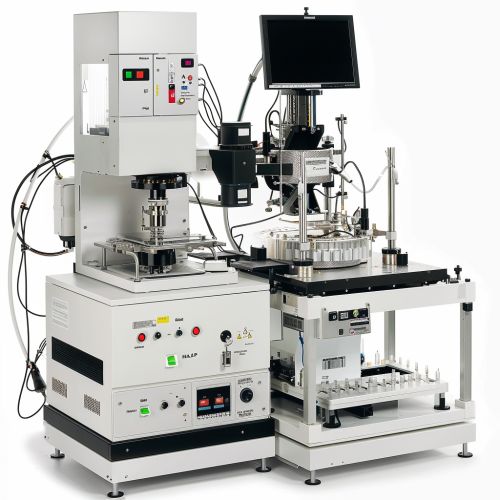Matrix-Assisted Laser Desorption/Ionization
Introduction
Matrix-Assisted Laser Desorption/Ionization (MALDI) is a soft ionization technique used in mass spectrometry, allowing the analysis of biomolecules (biopolymers such as proteins, peptides and sugars) and large organic molecules (such as polymers, dendrimers and other macromolecules), which tend to be fragile and fragment when ionized by more conventional ionization methods.


Principle of Operation
The ionization is triggered by a laser striking a matrix-analyte mixture. The matrix absorbs the laser energy and it helps to co-desorb and ionize the analyte. The generated ions are then accelerated by an electric field and their masses can be determined by a mass analyzer. The most common type of mass analyzer used with MALDI is the time-of-flight (TOF) analyzer, due to its large mass range.
Matrix
The matrix consists of a large excess of small organic molecules that have the following properties: they strongly absorb the laser radiation; they are easily vaporized; they are able to protonate or deprotonate the analyte; they have a low sublimation temperature. The matrix is crucial in the MALDI process as it absorbs the majority of the laser energy and it is responsible for the desorption and ionization of the analyte.
Applications
MALDI technique has been widely used in a variety of research fields due to its versatility. These include proteomics, polymer chemistry, and organic chemistry. It is also used in clinical diagnostic research, food safety analysis, and environmental testing.
Advantages and Disadvantages
The main advantage of MALDI is its high sensitivity and its ability to measure large biomolecules. However, one of the main disadvantages is the difficulty in analyzing mixtures due to the suppression of ionization of some components.
